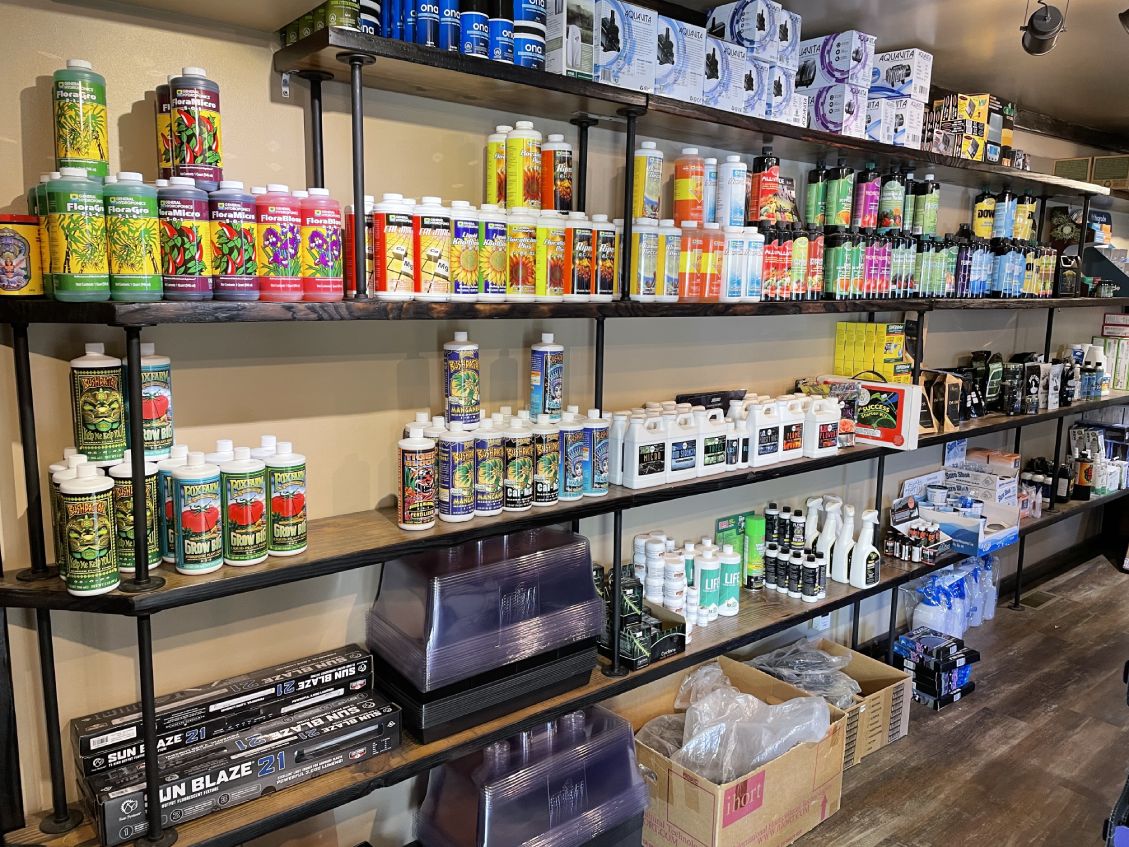Opening the Potential of Hydroponics: Comprehending Its Utilizes and Different Types
Hydroponics, an approach of growing plants without soil, has amassed enhancing interest for its potential to transform farming and gardening practices. As we browse via the detailed landscape of hydroponic systems and strategies, it comes to be obvious that each technique holds distinctive benefits and restrictions.
Benefits of Hydroponic Systems

Another advantage of hydroponic systems is the ability to grow plants in a smaller room. By removing the demand for dirt, plants can be expanded vertically or in stacked systems, maximizing using available space. This is particularly advantageous in urban areas or areas with limited arable land. Furthermore, hydroponic systems reduce the threat of soil-borne conditions and bugs, as there is no dirt to harbor these threats. This leads to much healthier plants and reduces the demand for hazardous pesticides, making hydroponic farming an extra lasting and eco-friendly choice.
Common Makes Use Of in Farming

Provided the effective water preservation and space-saving benefits of hydroponic systems, it is apparent that these ingenious farming techniques have actually discovered typical uses in different industries of agriculture. In typical farming, soil-based farming can be land-consuming and labor-intensive. Hydroponics offers a solution by allowing plants to be expanded without dirt, minimizing water usage by as much as 90% compared to conventional farming methods. This makes hydroponics specifically ideal for areas dealing with water shortage or limited cultivatable land. Additionally, the controlled environment of hydroponic systems makes it possible for year-round farming, supplying a constant supply of fresh produce no matter of outside climate condition.
Hydroponics is generally utilized for growing a range of crops, consisting of leafed environment-friendlies, tomatoes, cucumbers, natural herbs, strawberries, and peppers. Its adaptability extends to vertical farming, city farming, and greenhouse production. Furthermore, hydroponic systems are used in study and academic setups to study plant nutrition, growth, and cultivation techniques. The versatility and efficiency of hydroponics make it a beneficial tool in contemporary agriculture, resolving the obstacles of sustainability, food security, and resource optimization.
Exploring Different Hydroponic Techniques
What are the various innovative techniques utilized in hydroponics to enhance crop cultivation efficiency and yield? Hydroponic systems provide a range of methods that accommodate different plant kinds and cultivation goals. One popular method is the Deep Water Culture (DWC) system, where plant origins are immersed in a nutrient option, supplying sufficient oxygen and nutrients. One more widely used method is the Nutrient Movie Strategy (NFT), which entails a superficial stream of nutrient service flowing over the plant origins, advertising water and nutrient uptake. Furthermore, the Ups and downs system, additionally understood as the Flood and Drainpipe system, periodically floods the plant origins with nutrient option, permitting oxygenation throughout draining periods. Aeroponics is an additional advanced strategy that includes misting plant roots with a nutrient solution, optimizing oxygen absorption and nutrient uptake. Each of these methods showcases the versatility and performance of hydroponic systems in improving plant growth and return.
Contrasting Different Hydroponic Equipments
Exploring the effectiveness and return enhancement methods in hydroponics leads us to compare different hydroponic systems readily available for crop growing. Each hydroponic system has its unique functions, benefits, and constraints, making it important for farmers to choose the most appropriate system based upon their specific requirements and restrictions.
One of the most common hydroponic systems is the nutrient film technique (NFT), where a thin film of nutrient service continuously flows over the plant roots. In contrast, the deep water culture (DWC) system immerses plant origins straight right into the Click Here nutrient option, supplying additional reading adequate oxygen and nutrients.
An additional prominent hydroponic system is the ups and downs (or flooding and drain) system, which periodically floods the plant origins with nutrient remedy prior to draining it. This cyclic procedure makes sure appropriate aeration for the roots while delivering nutrients successfully. In addition, the aeroponic system puts on hold plant roots in the air and mists them with a nutrient solution, promoting rapid growth and high oxygenation degrees. Growers trying to find a flexible system that reduces water use frequently choose for aeroponics. By recognizing the differences in between these hydroponic systems, farmers can make enlightened choices to optimize crop yield and top quality.
Innovations in Hydroponic Modern Technology
With developments in hydroponic innovation, the agricultural sector is seeing a shift in the direction of much more reliable and sustainable farming approaches. Advancements in hydroponic technology are changing the method plants are expanded by making best use of returns, saving sources, and reducing ecological influence. One essential technology is the development of wise hydroponic systems that make use of sensors and automation to keep track of and readjust environmental conditions such as pH degrees, nutrient focus, and light exposure in real-time. These systems make it possible for accurate control over growing conditions, causing optimum plant growth and higher crop returns.
An additional noteworthy development is the combination of vertical farming methods with hydroponic systems, enabling for the farming of plants in piled layers. This upright technique maximizes space usage, making it excellent for city settings where land schedule is restricted - The Indoor Earthworm. Furthermore, the usage of innovative LED lights systems customized to specific plant needs has actually boosted power effectiveness and improved growth rates in hydroponic arrangements
Innovations like these are driving the advancement of hydroponics, making it a extremely attractive and lasting alternative for modern-day check this site out agriculture.
Conclusion
In verdict, hydroponics provides numerous advantages in agriculture and has numerous strategies and systems that can be used to optimize its capacity. Innovations in hydroponic modern technology remain to improve performance and sustainability in food production. By recognizing the usages and different kinds of hydroponic systems, farmers and farmers can unlock the complete capacity of this cutting-edge technique of expanding plants without soil.
In addition, hydroponic systems enable for far better control over nutrient levels, pH equilibrium, and environmental problems, leading to much healthier plants and higher returns.
